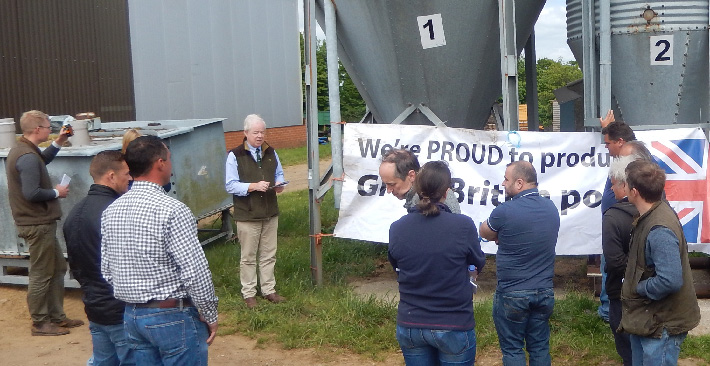EU pig prices are still in retreat following much better demand in the last quarter of 2019, but since then domestic demand has remained difficult, with more pigs coming forwards at higher weights coinciding with credit card bills popping through the letter box, not to mention more newspaper reports on the apparent popularity of non-meat protein foods which seem to have caught the public’s imagination and the manufacturers beady eyes.
Although the SPP only eased by a shade, dropping by .03 to stand at 162.5p, the picture in Europe is much more gloomy and in Germany more pain on the price front when following on from last week’s nine cent price reduction, a further four cents have been chopped off, which works out at an overall price reduction of around £9 per head in our money, with the German price now quoted at €1.82.
Weekly contribution prices have however generally remained stable at around 155p-163p.
As far as spot bacon prices are concerned, it has been a “don’t ring us we’ll ring you” day with most phones staying silent. Regular spot sellers were in some cases able to stand on, but others had eased back by between 2-4p with most spot quotes in and around 154p.
Cull sow slaughtering levels are now back to normal after the recent holiday period and despite lower EU wide pig meat prices, demand for sows in the UK was relatively firm and for this reason prices were only trimmed by around 2p, with most cull trades in a fairly wide range, between 108-113p/kg. An improvement in the value of the Euro, which traded today worth 85.22p compared with 84.87p a week ago, restricted most price falls in this sector to just a few pence.
The weaner market seems to have lost its way to some extent, with the latest AHDB 7kg average quoted down £1.75 and now stands at £41.26, but still no quotation for 30kg weaners from the AHDB due to “insufficient sample” but reports are indicating that 30kg weaners are changing hands (or trotters) in the £57-£60 range for RSPCA Assured and their Red Tractor counterparts are generally between £3 and £5 below this.
Pig finishers are however, keeping a wary eye on slightly easier finished pig values and the stealthy rise of cereal prices.
On the feed front, UK spot trades for feed wheat on an ex-farm basis have averaged £148.80/t compared with end of August values of £121/t and if this trend continues, COP levels will continue to rise, nibbling away at producers’ margins.
Futures markets are also reflecting rising prices, with the latest February ’20 trades for feed wheat at £160/t and for September ’20 an increase to £168/t.
Feed barley continues to trade at a discount of around £25/t on a like for like basis, but Hipro soya meal futures prices are slightly easier with February-April quoted at £297/t and May-October at £291/t.
And finally, the NPA have reacted generally favourably to the new Agriculture Bill which will provide a route for domestic agriculture once England has left the EU.
The emphasis will be on those farmers who will receive payments for better air and water quality, higher animal welfare standards, improve their access to the countryside and measures to persuade water to go uphill (reduce flooding) which might be slightly harder to achieve.
Soil quality will also be under the microscope and the scheme will form part of what is known as the ELM (Environment Land Management).
What is still needed however are reassurances from the Government to ensure that pig meat imports do not start coming this way under WTO rules with lower standards of welfare and antibiotic use than our own.
This also comes at a time when prices and demand for all red meat is being affected by media publicity and the launch of “non-meat” foods which pose a significant challenge to the whole of the pig industry at a time when climate change is very much in the public eye. There are however, some significant “mountains” to be climbed in the post-Brexit years ahead especially if the UK no longer has access to the 500m potential customers across the narrow strip of channel in the EU.




